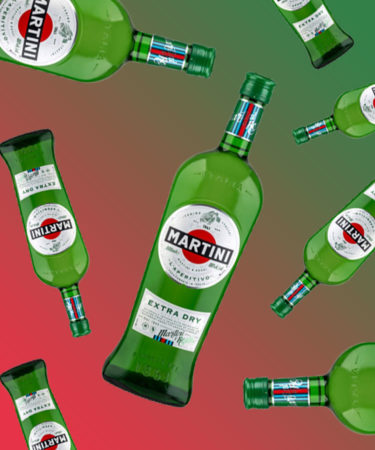If it wasn’t already the name of an iconic cocktail, one could easily argue a case for using the words Martini and vermouth interchangeably. By quite some margin, the Turin-based brand sells more vermouth than any other in the world.
According to data from the International Wines and Spirits Record (IWSR), in 2017, Martini & Rossi accounted for more than 45 percent of the global vermouth market. Its closest competitor has a 7 percent market share. The brand also leads vermouth sales in the U.S., owning 30 percent of the market.
Here are 10 more things you should know about the world’s most popular vermouth brand.
Don't Miss A Drop
Get the latest in beer, wine, and cocktail culture sent straight to your inbox.Martini & Rossi is named after a wine merchant and a master blender.
Founded as a vermouth distillery called Distilleria Nazionale di Spirito di Vino in the mid-1800s, the brand came to be known as Martini & Rossi after it was bought by employees Alessandro Martini (a former wine merchant) and Luigi Rossi (a master blender) in 1879. The Rossi family maintained full control of the brand until 1993, when it merged with Bacardí.
What came first: Martini or the Martini?
Whether you prefer it with gin or vodka, you can’t make a Martini without dry vermouth. (Unless you’re Winston Churchill, of course.) Some sources claim the famous cocktail gets its name from the name Martini & Rossi. Others disagree, and say that the cocktail’s name and recipe are an evolution of the Martinez, the cocktail invented around the same time at the Occidental Hotel in San Francisco.
If you like other classic cocktails, Martin & Rossi has you covered.
If you’re not a fan of “the only American invention as perfect as the sonnet” (as H. L. Mencken once described the Martini), Martini & Rossi also has a sweet red vermouth, an ingredient in the Manhattan. In 2015, the brand launched its Riserve Speciale bitter, which can replace Campari in a Negroni or Americano. Combined with bourbon, the sweet vermouth and amaro create the classic Boulevardier.
If you prefer bubbles, the brand has also got your back.
For those who prefer their libations at a slightly lower ABV with bubbles, Martini & Rossi makes a range of sparkling wines. The most famous is its Asti, which features Piedmontese Moscato Bianco grapes. This style can be a little sweet for some palates; fortunately, the company also makes Brut, Rosé Extra Brut, and Riesling.
The logo is a mystery.
Martini’s instantly recognizable ball and bar logo was filed as a trademark in Italy in 1929, and later internationally. Past that, little is known about who is responsible for the design or why the brand opted to change from its original logo. One theory is the design was inspired by the sun setting behind a Martini sign.
Martini & Rossi is a speed addict.
For nearly a century, Martini & Rossi has partnered with a number of professional sports, from cycling to basketball, golf, sailing and motor racing. In 1968, the brand launched the Martini Racing Team, which quickly became a major player in Formula 1. Between 2014 and 2018, Martini was the title sponsor of Williams F1. The race car featured the brand’s signature colors
Martini & Rossi makes iconic commercials.
For as long as television has been popular in Italy, Martini & Rossi has aired iconic commercials. Notable examples included a collaboration with Dolce & Gabbana, a pre-famous Charlize Theron, and George Clooney using a very peculiar part of an ice-sculptured bull to chill down his aperitivo.
Martini & Rossi looks out for bartenders’ health.
In 2018, to celebrate 50 years of Martini Racing, the brand launched a cycling program called Martini Racing Ciclismo. The program was designed to promote health and fitness for bartenders by providing a platform for them to train together. It culminated in a three-day charity cycle, and is set to return in 2019.
Its vermouths have secret recipes.
Master herbalist Ivano Tonutti (great job title, by the way) samples more than 500 botanicals per year to ensure only the highest quality ingredients make it into the Martini blend. Along with master blender Giuseppe “Beppe” Musso, Tonutti is the only person who knows the secret recipes for the brand’s vermouths. (There are also copies kept under lock and key, just in case.)
Even the wormwoods are blended.
To comply with E.U. law, vermouth must contain artemisia (wormwood). This ingredient provides the strong, bitter, appetite-stimulating flavor that characterizes aperitivo beverages. Virtually all vermouth brands use just one variety in their recipes, but, for its Riserva Speciale range, Martin & Rossi includes three different types: Pontica, Vulgaris, and Absinthium.

